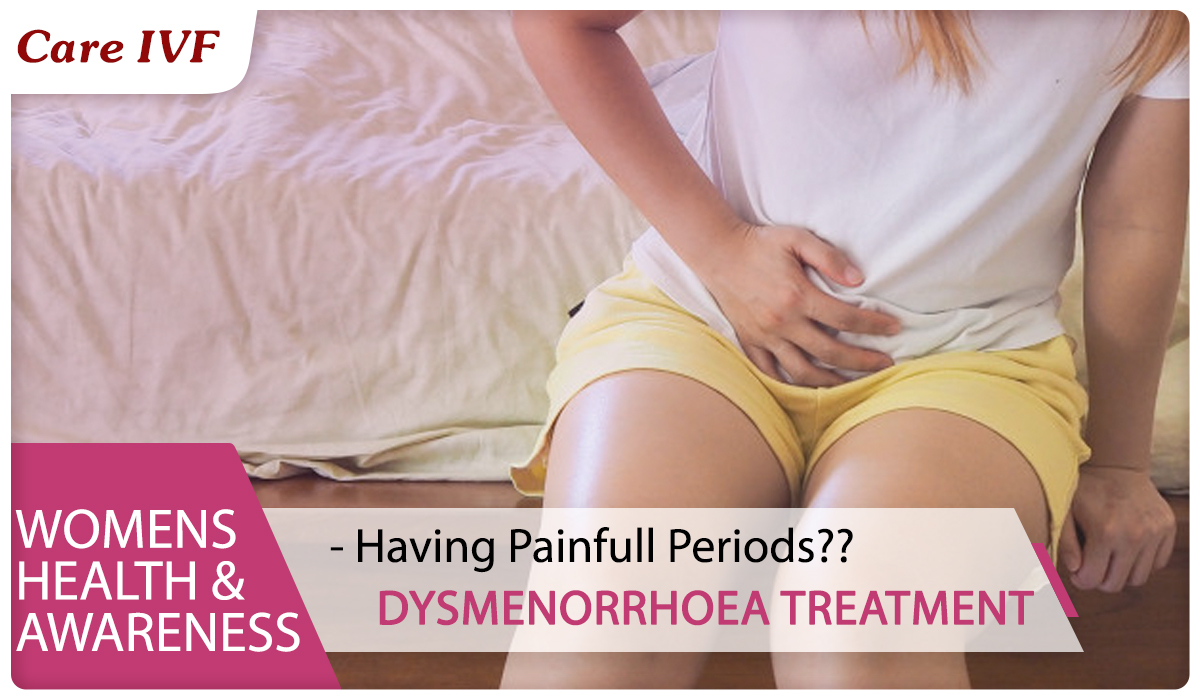

Painful periods or Dysmenorrhoea - an avoidable defect or a cause for concern
Pain associated with menstruation is called dysmenorrhea. Dysmenorrhea is the most commonly reported menstrual disorder. More than one half of women who menstruate have some pain for 1–2 days each month..
There are two types of dysmenorrhea: primary dysmenorrhea and secondary dysmenorrhea.
Primary Dysmenorrhea
Primary dysmenorrhea is pain that comes from having a menstrual period, or "menstrual cramps."
Many women are plagued by menstrual cramps from time to time, but did you know that there is a medical term for it? Dysmenorrhea is the official name for menstrual cramps. Cramps can occur right before your period is about to start, and might continue for several days. While some women may be able to cope with these lower abdominal cramps, they may at times, debilitate you. You may sometimes notice other symptoms that coincide with the cramps including diarrhea, sweating, nausea, and/or feeling faint. Some women find that medication helps to ease their menstrual cramps while others swear by the use of a heating pad and other non-drug therapy.
Primary dysmenorrhea usually is caused by natural chemicals called prostaglandins. Prostaglandins are made in the lining of the uterus.
Secondary Dysmenorrhea
ome of the conditions that can cause secondary dysmenorrhea include the following:
- Endometriosis— In this condition, tissue from the lining of the uterus is found outside the uterus, such as in the ovaries and fallopian tubes, behind the uterus, and on the bladder (see the FAQ Endometriosis). Like the lining of the uterus, endometriosis tissue breaks down and bleeds in response to changes in hormones. This bleeding can cause pain, especially right around menstruation. Scar tissue called adhesions may form inside the pelvis where the bleeding occurs. Adhesions can cause organs to stick together, resulting in pain.
- Adenomyosis—Tissue that normally lines the uterus begins to grow in the muscle wall of the uterus.
- Fibroids—Fibroids are growths that form on the outside, on the inside, or in the walls of the uterus. Fibroids located in the wall of the uterus can cause pain.
DYSMENORRHOEA DIAGNOSIS AND TREATMENT
- If you have dysmenorrhea, your health care provider will review your medical history, including your symptoms and menstrual cycles. He or she also will do a pelvic exam.
- An ultrasound exammay be done. In some cases, your health care provider will do a laparoscopy. This is a type of surgery that lets your health care provider look inside the pelvic region.
- Your health care provider may recommend medications to see if the pain can be relieved. Pain relievers or hormonal medications, such as birth control pills, often are prescribed. Some lifestyle changes also may help, such as exercise, getting enough sleep, and relaxation techniques.
- If medications do not relieve pain, treatment will focus on finding and removing the cause of your dysmenorrhea. You may need surgery. In some cases, a mix of treatments works best.
- Certain pain relievers, called nonsteroidal anti-inflammatory drugs (NSAIDs), target prostaglandins. They reduce the amount of prostaglandins made by the body and lessen their effects. These actions make menstrual cramps less severe.
- NSAIDs work best if taken at the first sign of your menstrual period or pain. You usually take them for only 1 or 2 days.
- Birth control medications that contain estrogen and progestin, such as the pill, the patch, and the vaginal ring, can be used to treat dysmenorrhea. Birth control methods that contain progestin only, such as the birth control implant and the injection, also may be effective in reducing dysmenorrhea. The hormonal intrauterine devicecan be used to treat dysmenorrhea as well.
- If your symptoms or a laparoscopy point to endometriosis as the cause of your dysmenorrhea, birth control pills, the birth control implant, the injection, or the hormonal intrauterine device can be tried.
- Gonadotropin-releasing hormone agonistsare another type of medication that may relieve endometriosis pain. These drugs may cause side effects, including bone loss, hot flashes, and vaginal dryness. They usually are given for a limited amount of time. They are not recommended for teenagers except in severe cases when other treatments have not worked.
- If other treatments do not work in relieving dysmenorrhea, surgery may be needed. The type of surgery depends on the cause of your pain.
- If fibroids are causing the pain, sometimes they can be removed with surgery. Endometriosis tissue can be removed during surgery. Endometriosis tissue may return after the surgery, but removing it can reduce the pain in the short term. Taking hormonal birth control or other medications after surgery may delay or prevent the return of pain.
- Hysterectomy may be done if other treatments have not worked and if the disease causing the dysmenorrhea is severe. This procedure normally is the last resort.
Article Tags
About the author

Leave a Comment